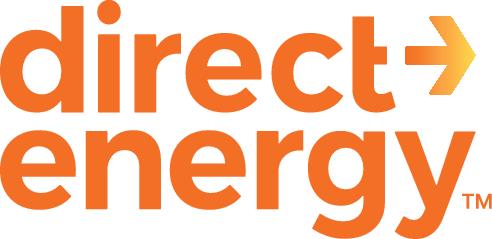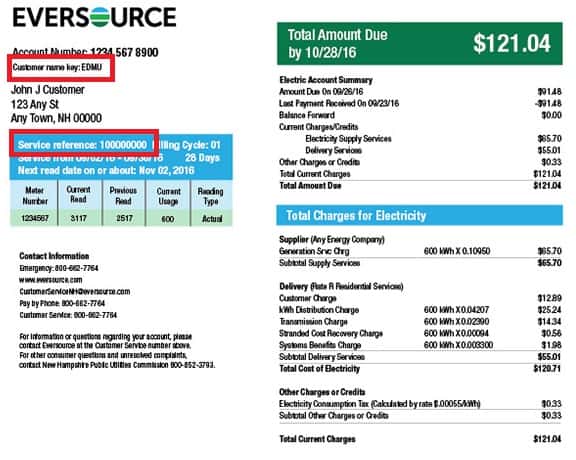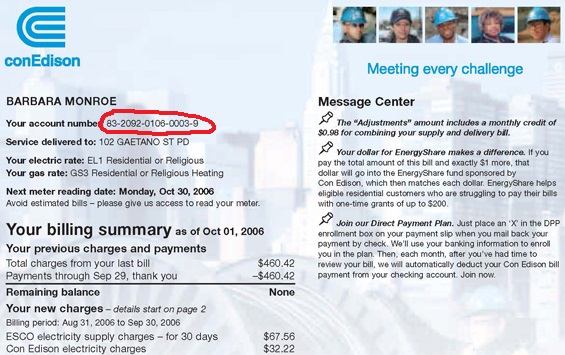We do not service your area yet
Would you like to leave your email so we could contact you
when pricing in your area becomes
available?
Connecticut Energy Deregulation
Connecticut deregulated electricity markets in 2000 and gave consumers an option to choose a third party electricity supply company. The Connecticut Department of Public Utility Control (DPUC) adopted legislation PA 98-28 in 1998, that ordered state utilities to unbundle their supply and delivery services and open electricity markets to competition. Since then over six hundred thousand households took advantage of the available options and switched to an alternative energy supplier. These customers account for 40% of all electricity sold in the state. The Connecticut migration rate to competitive suppliers is one of the highest in the nation growing by 4-5% annually. Additionally, Connecticut adopted a renewable portfolio standard requiring all alternative electricity providers to sell certain amount of energy from renewable sources.
If you are looking to join the growing number of residents and businesses who evaluate available options and take control of their energy bills, the process is quite simple: just look at the various plans below, find the most suitable, click ‘Sign up’ and you will be on your way to save money and the environment!
ELECTRICITY
Eversource – Connecticut Service Area
13.79¢/ KWh
38%
12 months
Locked rate

Plan Secure Choice 12
Showing 4 cheapest plans
United Illuminating – Connecticut Service Area
13.69¢/ KWh
38%
12 months
Locked rate

Plan Secure Choice 12
Showing 4 cheapest plans
Average Residential Electricity Bill
■ In July, 2025, the average monthly bill for residential electricity customers in Connecticut was $281.93, which ranked one of the highest in the U.S.
■ The average monthly bill for residential electricity customers in Connecticut in July, 2025 increased by 1.47% over prior month and decreased by -1.29% relative to what it was in July, 2024.
■ In July, 2025, this average monthly residential electricity bill in Connecticut was 48.04% higher than the national average monthly bill of $190.44.
■ Average monthly residential electricity bills in the U.S. ranged from $117.69 to $286.76 in July, 2025.
Average Residential Electricity Rate
■ In July, 2025, residential electricity rates in Connecticut averaged 27.64¢/kWh, which ranks 5th in the U.S.
■ Residential electricity rates in Connecticut increased 1.47% from June, 2025 to July, 2025 and -1.29% from July, 2024 to July, 2025.
■ The average residential electricity rate of 27.64¢/kWh in Connecticut was 52.7% higher than the national average electricity residential rate of 16.57¢/kWh in July, 2025.
■ The average residential rate in the U.S. ranged from 12.28 ¢/kWh to 39.36 ¢/kWh in July, 2025.
Average Residential Electricity Usage
■ Connecticut had 1,573,119 residential electricity customers in July, 2025, an increase of 1.5% from July, 2024.
■ In July, 2025, the average residential electricity customer in Connecticut used 1,020 kWh, which ranked 21 in the U.S.
■ The average residential electricity customer used 1,020 kWh in July, 2025, an increase of 37.28% from June, 2025 and an increase of 4.83% from July, 2024.
■ In July, 2025, the average residential Connecticut customer used 9.2% less electricity than the national average.
■ Residential customers in Connecticut spent $443 million in July, 2025 on electricity, compared to $318 million in June, 2025 and $422 million in July, 2024.
Comparison Statistics for Residential Electricity in Connecticut
■ In July, 2025, 38,745 residential electricity customers in Connecticut compared electricity rates and switched electricity suppliers.
■ Residential electricity customers in Connecticut paid 7.86 ¢/kWh on average to alternative electricity suppliers in July, 2025.
■ Average monthly usage for the customers that had switched electricity suppliers in July, 2025 was 635.8 kWh.
■ As of July, 2025, 35.6% of residential electricity customers in Connecticut were using an alternative electricity supplier.
Average Commercial Electricity Bill
■ In July, 2025, the average monthly bill for commercial electricity customers in Connecticut was $1,649.32, which ranked one of the highest in the U.S.
■ The average monthly bill for commercial electricity customers in Connecticut in July, 2025 increased by 7.30% over prior month and increased by 14.09% relative to what it was in July, 2024.
■ In July, 2025, this average monthly commercial electricity bill in Connecticut was 60.53% higher than the national average monthly bill of $1,027.45.
■ Average monthly commercial electricity bills in the U.S. ranged from $401.78 to $5,516.14 in July, 2025.
Average Commercial Electricity Rate
■ In July, 2025, commercial electricity rates in Connecticut averaged 22.92¢/kWh, which ranks 6th in the U.S.
■ Commercial electricity rates in Connecticut increased 7.30% from June, 2025 to July, 2025 and 14.09% from July, 2024 to July, 2025.
■ The average commercial electricity rate of 22.92¢/kWh in Connecticut was 57.9% higher than the national average electricity commercial rate of 14.78¢/kWh in July, 2025.
■ The average commercial rate in the U.S. ranged from 7.80 ¢/kWh to 35.05 ¢/kWh in July, 2025.
Average Commercial Electricity Usage
■ Connecticut had 156,409 commercial electricity customers in July, 2025, a decrease of 0.22% from July, 2024.
■ In July, 2025, the average commercial electricity customer in Connecticut used 7,196 kWh, which ranked 33 in the U.S.
■ The average commercial electricity customer used 7,196 kWh in July, 2025, an increase of 3.66% from June, 2025 and a decrease of 4.21% from July, 2024.
■ In July, 2025, the average commercial Connecticut customer used 1.4% less electricity than the national average.
■ Commercial customers in Connecticut spent $257 million in July, 2025 on electricity, compared to $231 million in June, 2025 and $236 million in July, 2024.
Comparison Statistics for Commercial Electricity in Connecticut
■ In July, 2025, 5,138 commercial electricity customers in Connecticut compared electricity rates and switched electricity suppliers.
■ Commercial electricity customers in Connecticut paid 7.06 ¢/kWh on average to alternative electricity suppliers in July, 2025.
■ Average monthly usage for the customers that had switched electricity suppliers in July, 2025 was 10,305 kWh.
■ As of July, 2025, 43.3% of commercial electricity customers in Connecticut were using an alternative electricity supplier.
Average Industrial Electricity Bill
■ In July, 2025, the average monthly bill for industrial electricity customers in Connecticut was $12,166.31.
■ The average monthly bill for industrial electricity customers in Connecticut in July, 2025 decreased by -2.29% over prior month and increased by 9.14% relative to what it was in July, 2024.
■ In July, 2025, this average monthly industrial electricity bill in Connecticut was -25.24% lower than the national average monthly bill of $16,274.13.
■ Average monthly industrial electricity bills in the U.S. ranged from $1,575.55 to $90,870.00 in July, 2025.
Average Industrial Electricity Rate
■ In July, 2025, industrial electricity rates in Connecticut averaged 18.75¢/kWh, which ranks 7th in the U.S.
■ Industrial electricity rates in Connecticut decreased -2.29% from June, 2025 to July, 2025 and 9.14% from July, 2024 to July, 2025.
■ The average industrial electricity rate of 18.75¢/kWh in Connecticut was 70% higher than the national average electricity industrial rate of 13.04¢/kWh in July, 2025.
■ The average industrial rate in the U.S. ranged from 5.82 ¢/kWh to 30.29 ¢/kWh in July, 2025.
Average Industrial Electricity Usage
■ Connecticut had 3,791 industrial electricity customers in July, 2025, a decrease of 1.28% from July, 2024.
■ In July, 2025, the average industrial electricity customer in Connecticut used 64,887 kWh, which ranked 17 in the U.S.
■ The average industrial electricity customer used 64,887 kWh in July, 2025, an increase of 11.92% from June, 2025 and an increase of 8.11% from July, 2024.
■ In July, 2025, the average industrial Connecticut customer used 57.2% less electricity than the national average.
■ Industrial customers in Connecticut spent $46 million in July, 2025 on electricity, compared to $41 million in June, 2025 and $39 million in July, 2024.
Comparison Statistics for Industrial Electricity in Connecticut
■ In July, 2025, 201 industrial electricity customers in Connecticut compared electricity rates and switched electricity suppliers.
■ Industrial electricity customers in Connecticut paid 6.56 ¢/kWh on average to alternative electricity suppliers in July, 2025.
■ Average monthly usage for the customers that had switched electricity suppliers in July, 2025 was 81,103 kWh.
■ As of July, 2025, 47.6% of industrial electricity customers in Connecticut were using an alternative electricity supplier.
Compare and save on your electric bill in CT
If your energy bill is higher than you want it to be, rest assured that you are in great company. Many residents and businesses struggle with a high UI or Eversource electric bills each month. Thankfully, this struggle may be needless and could be easy to avoid. Deregulation in Connecticut means that both residents and businesses can shop around to compare energy plans. In the process, they could identify a plan with significantly lower rates to lock in savings for months to come.
Compare Electric Rates to Save Money
If you have never compared electricity rates or switched providers, you understandably may feel lost. The good news is that comparing rates and making a switch are both easy steps to take. The first step is to compare electric rates and to identify a new plan that is ideal for you. You can conveniently shop around for best rates at PowerSetter.com or through Energize CT. A simple query will return the current rates for United Illuminating’s and Eversource’s standard plans as well as rates for numerous other providers. The grid includes plan details like cancellation fees, enrollment fees as well as an easy online signup application.
What to Look for When Comparing Plans
In order to identify savings opportunities, you need to know how much you are currently paying for electricity. Your electric bill includes both supply and delivery charges. While you can shop around for a company who will supply your electricity, you can’t change the delivery, as it will always be provided by your local utility. Review all available supply options closely so that you can determine the most affordable plan available. In addition to comparing the supply rate, you need to know how long the plan’s rate is fixed for. Some plans have a tiered structure where the rate adjusts after the first few months. You also need to focus on the various fees associated with the plan, what the cancellation terms are and what amount of the energy supply is sourced from renewable energy.
How to Save Money on Utilities When Moving
Are you planning to relocate to Connecticut soon, or are you planning to move to a new home within the state? If you are new to the area, you should spend an adequate amount of time learning about all energy plans available to you. Your selection will directly impact your monthly expenses in the years ahead. If you are relocating in the local area, however, you may be able to transfer your existing plan to your new home or place of business. Transferring your plan and service to your new location may be essential in order to avoid expensive cancellation fees. If you are not under a contract, you should explore the current plans available to identify the best rate for your needs.
Other Ways to Slash Your Energy Bill
One of the primary reasons why local residents and business owners compare electric rates and switch providers is to save money. This is a relatively easy and effective way to lower your energy bills, but there are other steps that you can and should take. For example, if your home is equipped with outdated appliances, those appliances may be guzzling an incredible amount of energy. Upgraded to energy-efficient, appliances may yield tremendous savings. Another idea is to improve the efficiency of your home or business. Adding new seals to doors and windows, installing new insulation and replacing old lightbulbs are only some of the many energy-saving ideas that you can employ. With great savings available through various rebates, making these improvements and upgrades may not be as expensive as you initially think it would be.
What Happens When the Current Plan Ends?
We got you covered! When your current plan is nearing expiration we will send you a reminder letting you know it is time to shop for a new rate.





